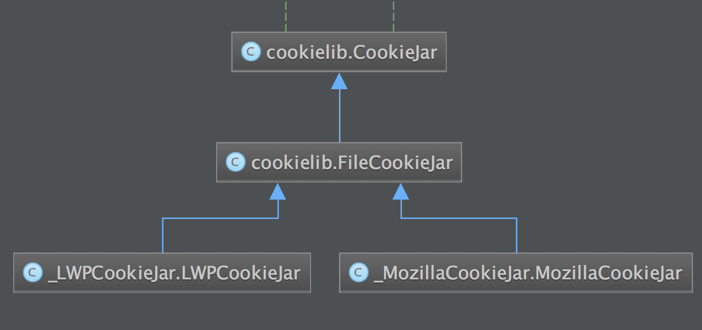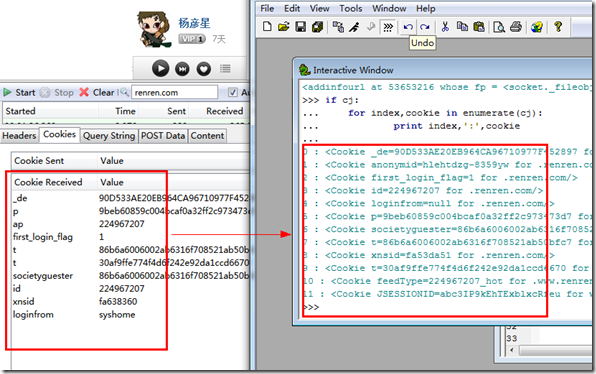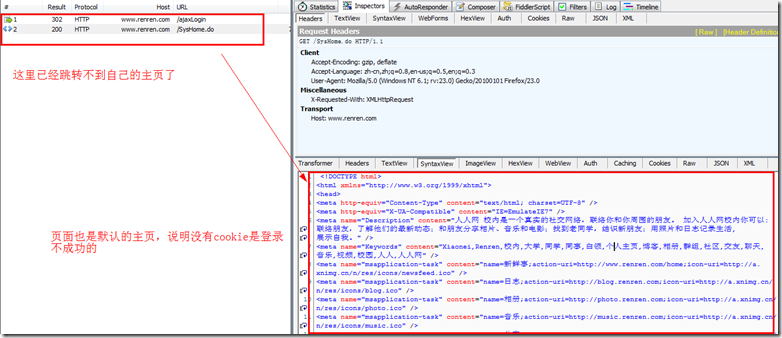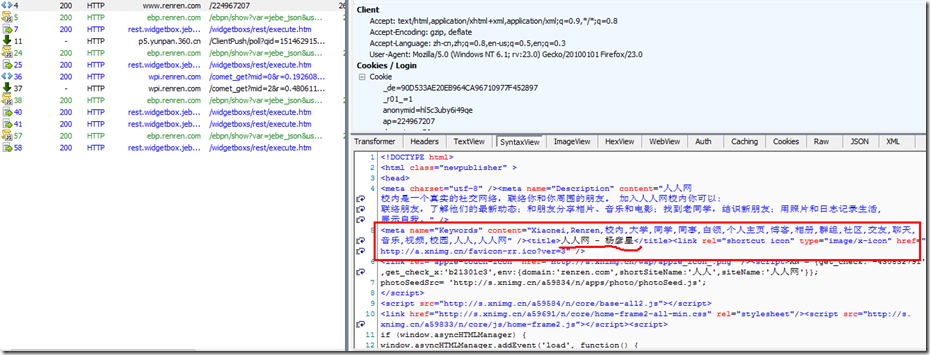Home >Backend Development >Python Tutorial >Python tutorial on how to use cookielib module to manipulate cookies
Python tutorial on how to use cookielib module to manipulate cookies
- WBOYWBOYWBOYWBOYWBOYWBOYWBOYWBOYWBOYWBOYWBOYWBOYWBOriginal
- 2016-08-04 08:55:481239browse
Cookielib is a module that automatically handles cookies. If we need to save cookies when using technologies such as crawlers, cookielib will allow you to get twice the result with half the effort! His most common partner modules are urllib and request under python.
Core classes
1.Cookie
This class implements the cookie standard defined by Netscape and RFC 2965 cookies, and can basically be understood as a certain piece of cookie data.
Part of the code is as follows. Do many attributes look familiar?
self.domain_initial_dot = domain_initial_dot
self.path = path
self.path_specified = path_specified
self.secure = secure
self.expires = expires
self.discard = discard
self.comment = comment
self.comment_url = comment_url
self.rfc2109 = rfc2109
2.CookiePolicy
The main function of this class is to send and receive cookies, that is, to ensure that the correct cookie is sent to the corresponding domain name, and vice versa.
3.DefaultCookiePolicy
This class implements the CookiePolicy interface.
4.CookieJar
CookieJar is a collection of cookies, which can contain many Cookie classes and is our main operation object. There are a series of methods to support more detailed operations!
5.FileCookieJar
This class inherits from CookieJar. CookieJar only completes its life cycle in memory. The subclass of FileCookieJar can achieve data persistence and defines three interfaces: save, load, and revert.
6.MozillaCookieJar & LWPCookieJar
Two implementation classes, the inheritance relationship is as follows:

Example: Log in to Renren
Use the httpFox plug-in under firefox to find out the POST address required when logging in to Renren.com is http://www.renren.com/ajaxLogin

And I saw that the DATA required for POST includes email and password
python handles cookies through cookielib, the following is a simple code
>>> import urllib
>>> import urllib2,cookielib
>>> login_page = "http://www.renren.com/ajaxLogin"
>>> cj = cookielib.CookieJar()
>>> opener = urllib2.build_opener(urllib2.HTTPCookieProcessor(cj))
>>> opener.add_handler = [('User-agent','Mozilla/4.0 (compatible; MSIE 6.0; Windows NT 5.1)')]
>>> data = urllib.urlencode({"email":'username',"password":'password'})
>>> opener.open(login_page,data)
<addinfourl at 53653216 whose fp = <socket._fileobject object at 0x03307B70>>
>>> if cj:
... for index,cookie in enumerate(cj):
... print index,':',cookie
...
0 : <Cookie _de=90D533AE20EB964CA96710977F452897 for .renren.com/>
1 : <Cookie anonymid=hlehtdzg-8359yw for .renren.com/>
2 : <Cookie first_login_flag=1 for .renren.com/>
3 : <Cookie id=224967207 for .renren.com/>
4 : <Cookie loginfrom=null for .renren.com/>
5 : <Cookie p=9beb60859c004bcaf0a32ff2c973473d7 for .renren.com/>
6 : <Cookie societyguester=86b6a6006002ab6316f708521ab50bfc7 for .renren.com/>
7 : <Cookie t=86b6a6006002ab6316f708521ab50bfc7 for .renren.com/>
8 : <Cookie xnsid=fa53da51 for .renren.com/>
9 : <Cookie t=30af9ffe774f4d6f242e92da1ccd6670 for .renren.com/xtalk/>
10 : <Cookie feedType=224967207_hot for .www.renren.com/>
11 : <Cookie JSESSIONID=abc3IP9kEhTExblxcRfeu for www.renren.com/>
>>>
You can compare it with the cookie obtained in firebug or httpFox. The value may be inconsistent, but the key is basically the same. It should be inconsistent every time you log in

I also tried using fidder to simulate sending POST data without cookies, but I didn’t get the desired return value

After adding the cookie information, you can jump to your homepage normally


Okay, we basically understand the use of cookies in python to send login information. Now let’s write a small script to log in to our Renren website.
#encoding=utf-8
import urllib2
import urllib
import cookielib
def renrenBrower(url,user,password):
login_page = "http://www.renren.com/ajaxLogin"
try:
cj = cookielib.CookieJar()
opener=urllib2.build_opener(urllib2.HTTPCookieProcessor(cj))
opener.addheaders = [('User-agent','Mozilla/4.0 (compatible; MSIE 6.0; Windows NT 5.1)')]
data = urllib.urlencode({"email":user,"password":password})
opener.open(login_page,data)
op=opener.open(url)
data= op.read()
return data
except Exception,e:
print str(e)
print renrenBrower("http://www.renren.com/home","用户名","密码")
In this way, you can display the information on your homepage. In fact, after logging in, you can continue to write scripts to get the information you want, such as friends’ latest news, etc. I won’t explain too much here~

